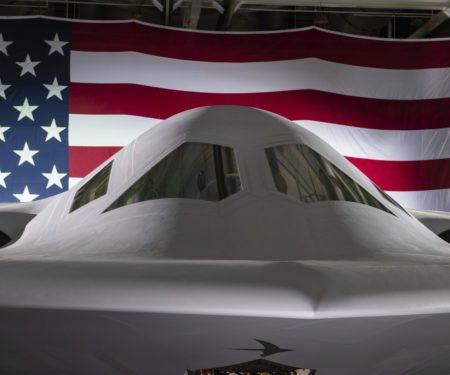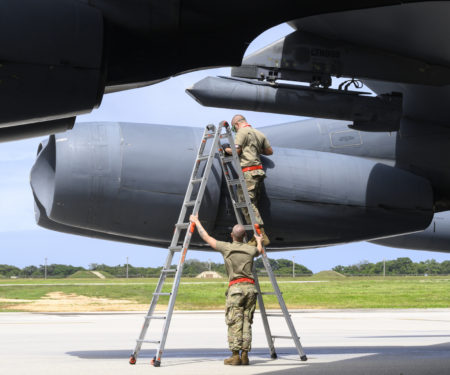Supply Chain, Long Lead Times, Bureaucracy Challenge Nuclear Sustainment
Purses, Parkas, and Patches—Air Force Uniform Board Unveils New Changes, But No Beards
Watch and Read: All the Videos and Transcripts from AWS 23
Radar Sweep
‘Woke-ism’ Not an Issue, Top Military Leaders Say
Top military leaders say there is no evidence that diversity policies have harmed recruiting or readiness, and that troops and recruits actually value inclusion—despite repeated criticism of so-called “woke” policies by right-wing politicians. Air Force Chief of Staff Gen. C.Q. Brown and Marine Commandant Gen. David Berger both commented on the issue in exclusive interviews with Defense One as part of the annual State of Defense series.
Only 7 NATO Members Hit Alliance’s 2 Percent GDP Defense Spending Target in 2022
Just seven of NATO’s 30 member states met its 2 percent GDP defense spending target in 2022, figures from the alliance’s newly published annual report show, while Russia’s invasion of Ukraine highlighted for many the criticality of future defense spending in Europe. The U.S., Estonia, Greece, Latvia, Lithuania, Poland, and the United Kingdom, all achieved the standard with Croatia and France among those falling just short. Others were further behind.
Go Deeper on Operational Imperatives
Virtually every part of the Department of the Air Force’s drive to modernize is being shaped by Secretary Frank Kendall’s seven Operational Imperatives—lines of effort that address the most important and urgent challenges facing the Air Force today. Now, the department and industry are working together to develop solutions for each imperative, and the results will likely change the Air Force and Space Force for the next generation. Keep up with all the latest news on each Operational Imperative.
US Speeds Up Deliveries of Abrams Tanks, Patriot Systems to Ukraine
The U.S. is accelerating the training and delivery of Abrams tanks and Patriot missile defense systems for Ukraine, as preparations ramp up for expected heavy fighting this year. The Pentagon is aiming to refurbish existing M1A1 Abrams tank hulls in order to get them to Ukraine this fall, as opposed to building new tanks that would be delivered much later, according to a Defense Department official. Meanwhile, 65 Ukrainians are wrapping up training on the Patriot missile system at Fort Sill, Okla., in the coming days, base military officials said.
Pentagon CIO Places High Priority on Developing GPS Alternatives with Growing Threat of Great Power Conflict
GPS has served as the “gold standard” of position, navigation, and timing (PNT) technology for the last several decades, Department of Defense CIO John Sherman said March 21. But with global tensions rising in ways reminiscent of the world wars, the DOD needs to quickly identify and adopt alternatives to GPS ahead of a potential conflict with great power adversaries because it will be those nations’ first target in a modern war, he said.
Starlink Satellites Are Boosting Air Force Communication Across the Indo-Pacific
The Air Force is using commercial Starlink satellites to communicate with Airmen dispersed across the vast Indo-Pacific, officials said this week at the home of U.S. Forces Japan. The 730th Air Mobility Squadron showed off one of three recently acquired Starlink terminals during a visit March 20 by the Air Force Expeditionary Center’s commander, Maj. Gen. John Klein.
US Air Force to Test Hardware at Hypersonic Speeds on Varda’s Space Capsules
The U.S. Air Force plans to use startup Varda Space Industries’ reentry capsules as hypersonic flight test platforms, the company’s cofounder Delian Asparouhov told SpaceNews. Varda has been raising venture funds to send to orbit 120-kilogram “factory” satellites to make products in zero-gravity and return them to Earth in a reentry capsule. The Air Force would use the capsule as a platform to test the performance of components and materials at hypersonic speeds.
How the Soviet NKVD Smuggled Doolittle Raiders to Safety During WWII
On April 18, 1942, 60 officers and crewmen aboard 16 B-25 Mitchell bombers did the improbable. They took off from the flight deck of the USS Hornet and flew a bombing mission over the Japanese Empire’s capital of Tokyo and a few select other targets on its home island. After dropping their payloads, the Raiders were to fly to bases in China, refuel and head for the safety of American forces. All but one would either crash in China or be ditched into the sea. The 15 that would crash headed for Chaozhou in China, the one that survived headed for Vladivostok in the Soviet Union—so why didn’t they all head for the USSR?




